Jon Glassberg is a professional climber for twenty years and has traveled the world climbing rocks up to 5.14 and V14. His authentic view of climbing and the Outdoor Industry grew from simple beginnings as a committed climber. In the past decade, his focus has shifted from the rock to the camera as a director who captures the heart and soul of cutting-edge climbing. Through dedication and consistency, he has grown his company, Louder Than Eleven, into one of the Outdoor Industry’s most trusted production houses. Jon works with pro athletes on their level and has directed a variety of award-winning features and international campaigns for The North Face, Mountain Hardwear, 37.5 Technology, Marmot, Black Diamond, La Sportiva, Petzl, USA Climbing, Outdoor Research, and Spyder. Jon shoots from precarious places where most filmmakers don’t have the skills to go. He captures commercial quality images in both the vertical and horizontal worlds.
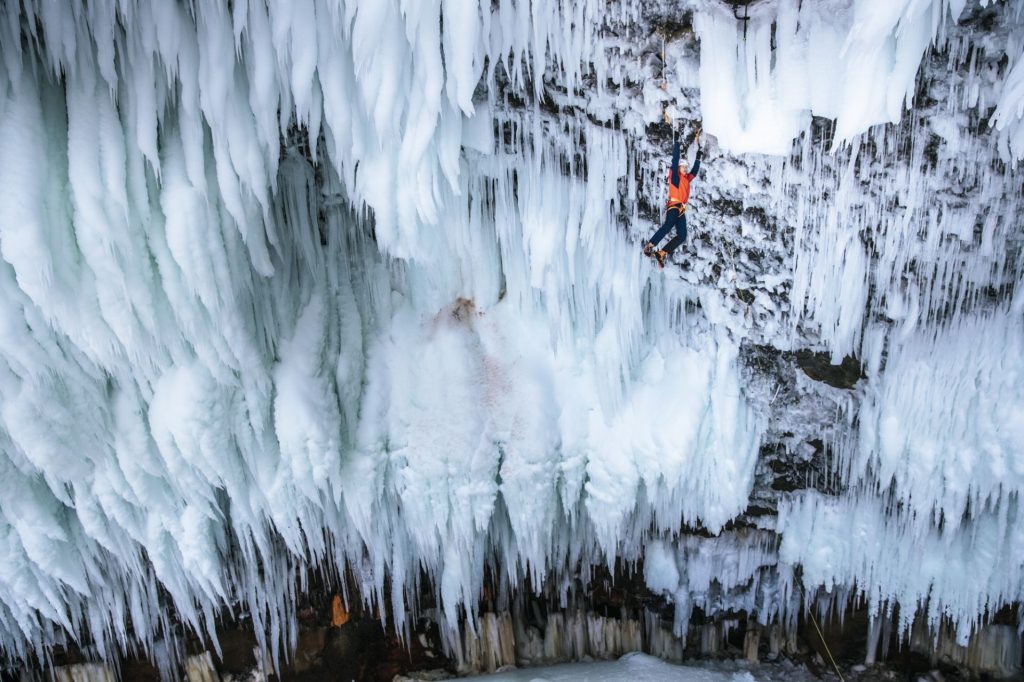
Jon enjoys hanging from the side of El Capitan capturing free ascents 3000 ft off the valley floor, climbing in the Rocky Mountains, and traveling to the corners of the earth to capture rare moments in sport. He likes to follow personalities and develop deep, authentic stories about talented people doing the coolest stuff out there.
Jon Glassberg 
This is my camera kit for capturing documentary video from a high angle climbing position on a big wall or single pitch climbing scenario with a climbing team. I have used this kit to capture great audio and video with climbers all over the world from high altitude big walls in Peru to El Capitan in Yosemite to single pitch climbs outside my home in Boulder, Colorado. This kit has been awesome for capturing cinematic documentary footage of climbers in a wide range of environments and shooting conditions you might face on a wall.
I designed this kit for reliability, functionality, ease of use, and versatility. I typically bring up the Canon C200 and the CN-E 18-80mm Lens, operating handheld to stay light and fast. I'll throw in the additional lenses and monopod if I want something specific or cinematic and have the time to set it up and capture higher production value. The goal is to be light and fast but also capture high-quality video in 4k RAW with great audio despite being in challenging environments that are stressful and ever-changing.
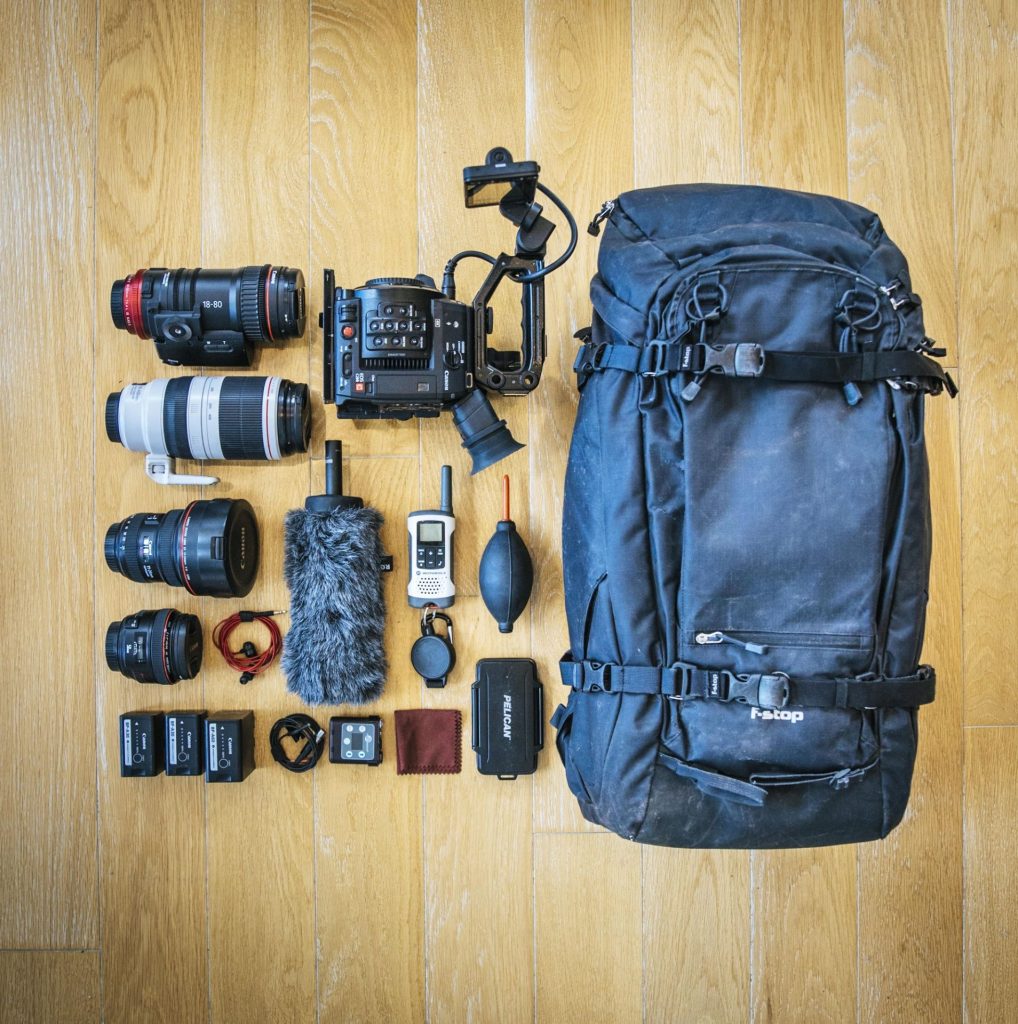
I choose the Canon C200 MK II because of the 4k RAW 60fps Cinema Raw Light image capture and how simple it is to use with the Canon 18 - 80mm Zoom Lens. Auto focus on that lens and pro audio from the shotgun mic is totally seamless and easy to use in stressful shooting scenarios. The batteries last forever and the ergonomics of the eyecup or the LCD screen for varied shooting scenarios is awesome. The face recognition and built in ND filters make this camera so easy to use, you can focus on framing and staying alive rather than fussing with settings all day long.
When I am going light and fast I bring just the Canon 18-80mm. It is a total workhorse and can handle 90% of all shooting scenarios in my experience. If I need to shoot wider, Ill grab the 11-24mm, and if I can get far enough away like on a big wall or a mountain, Ill pop on the 100-400mm to get some long lens angles. Typically this is too heavy for big wall shooting but it can be really fun to have. I also will toss in the 50mm f/1.2 for close ups, details, or pop up interviews on the wall.
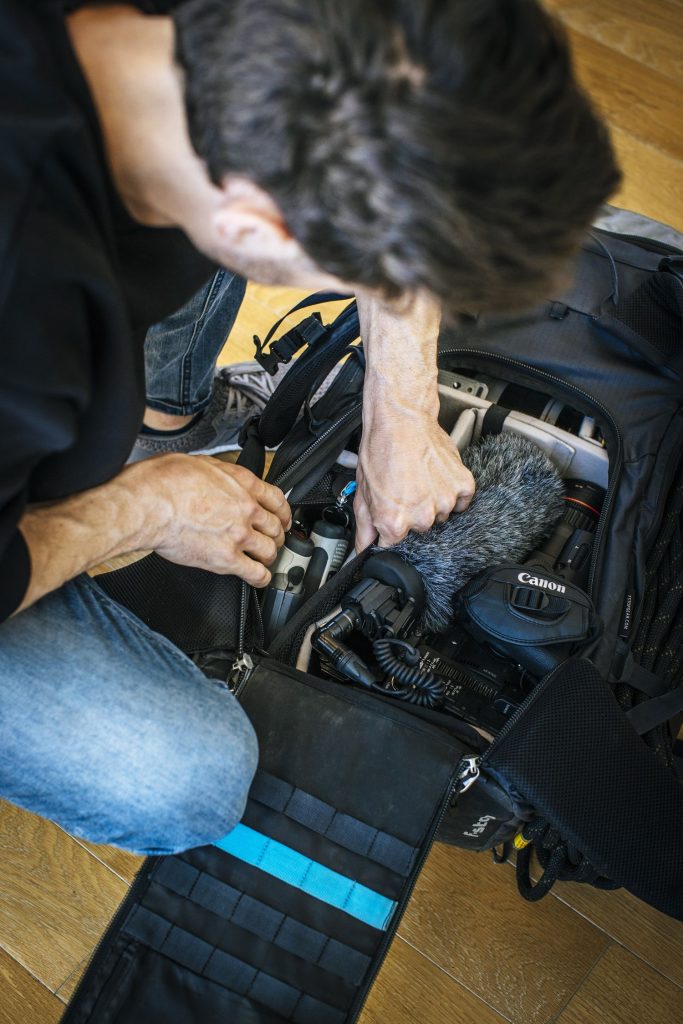
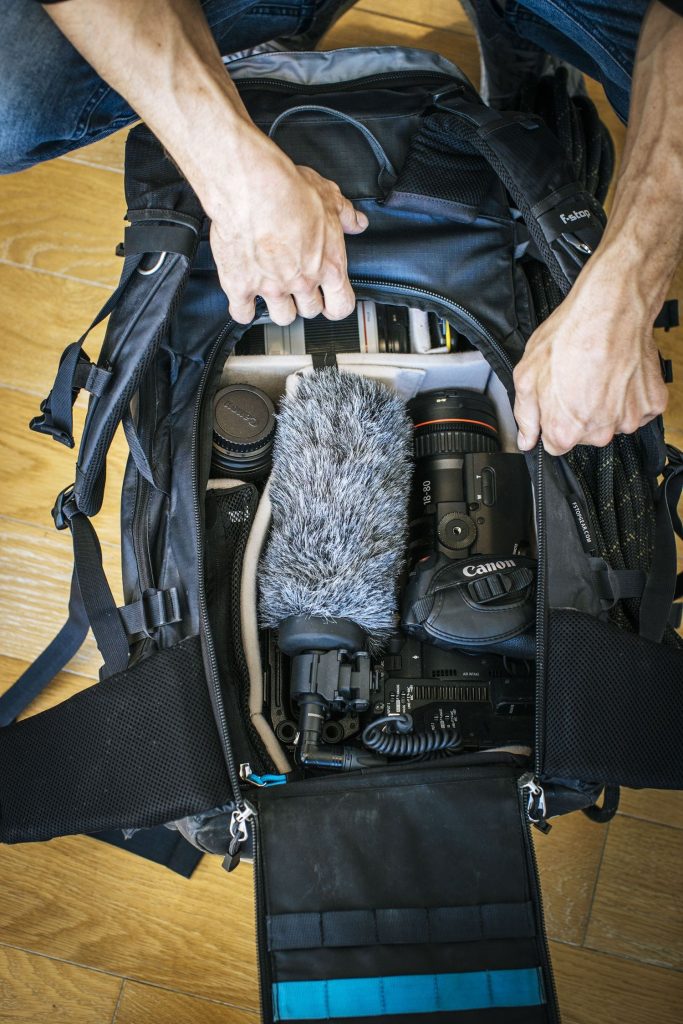
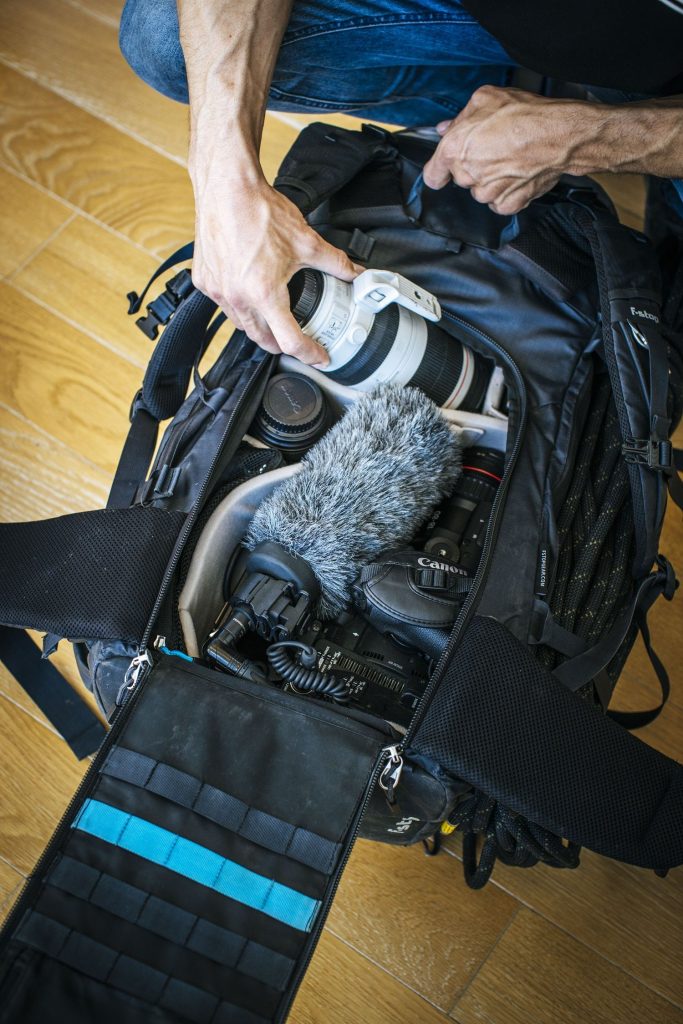
Having enough media to capture hours of RAW 4k at 60fps is expensive but I have gotten by with 6 total 256 CFast cards for big wall shooting while having either SD cards for backup or for proxy dual record to make post production easier and faster. Its also night to have a crush proof card wallet that can be tethered to keep it from flying away when you are swapping cards.
I have found that the Rode NTG3B provides incredible audio right into the camera and can often be all you need.
I have used this mic extensively ion big walls and easily captures sound from climbers 100ft away talking or breathing while climbing. I will also throw a Lectrosonic PDR on the climber and run the mic through the shirt and into the helmet to capture intimate audio without to much weight. The PDR battery life lasts forever and gives incredible audio that can be synced to video in post. I also bring headphones for pop up interviews or to monitor audio but the in camera audio monitors are pretty easy to check now and again just to make sure you are getting something with the shotgun.
I use a monopod on the wall for creative moves or to shoot long pitches of climbing action. Typically the monopod is solid enough for long lens work and also provides an additional stabilization point for capturing cinematic video without too much handheld shaking. Sub in the tripod for ground work but we are mostly talking high angle cinematography here so I don’t bring it up on the wall but always have it at the base.
The Canon C200, lenses, audio equipment, climbing equipment, monopod, and accessories all fit pretty nicely in the f-stop Sukha Bag.
I typically keep the camera in the bag completely built out and ready to pull out and shoot with. The XL ICU can be set up with ICU gates to keep your accessories from flying out when you open the bag in the vertical environment. I have found that you can haul the bag pretty easily with a sling threaded between the carry loop and backpack straps and it hauls pretty much upright. I try and keep the bag from hitting the wall when I haul it since the fabric gets chewed up pretty fast from abrasion. I can stick the monopod in the side sleeve and the belay seat in the front pouch and keep everything “inside the bag” so that it doesn’t catch when I haul it. It even has room for food, water, a layer or two of clothing and anything else you might like on the wall. Accessories usually go in the top zip pouch to keep from falling out.
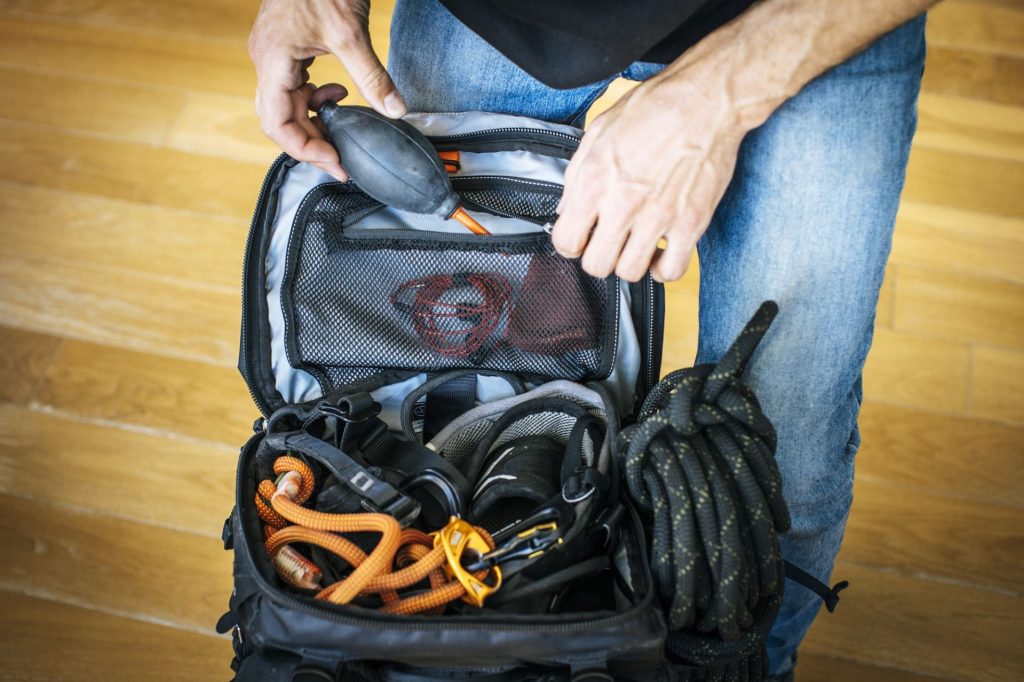
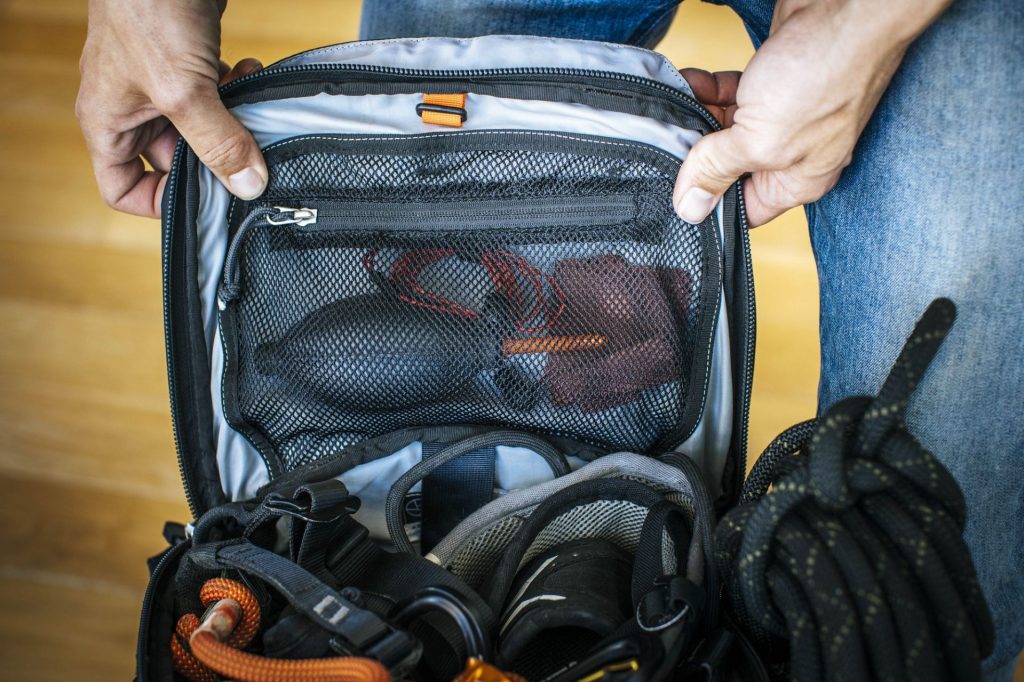
I bring a circular polarizer on the wall to balance the wall and the sky or the wall and the base of the climb that are typically blown out. I also bring along a radio to communicate with the climbers or a second shooter, producer, or assistants.
My rigging kit is designed to be light and fast for simple climbing situations. Ascending and descending static rope and hanging from a position for a long time to capture climbing action. I like to wear pants to keep abrasion down, La Sportiva TX3 approach shoes for a stable base for jugging and bring extra layers to stay warm when hanging around for a while. I keep my kit light and small so I can stay organized and not get bogged down with unnecessary gear. I also haul my camera bag once I reach my shoot location, I don’t jug the rope with the bag. I can do a tutorial on how to jug, get in position, and rig for shooting in other tutorial.
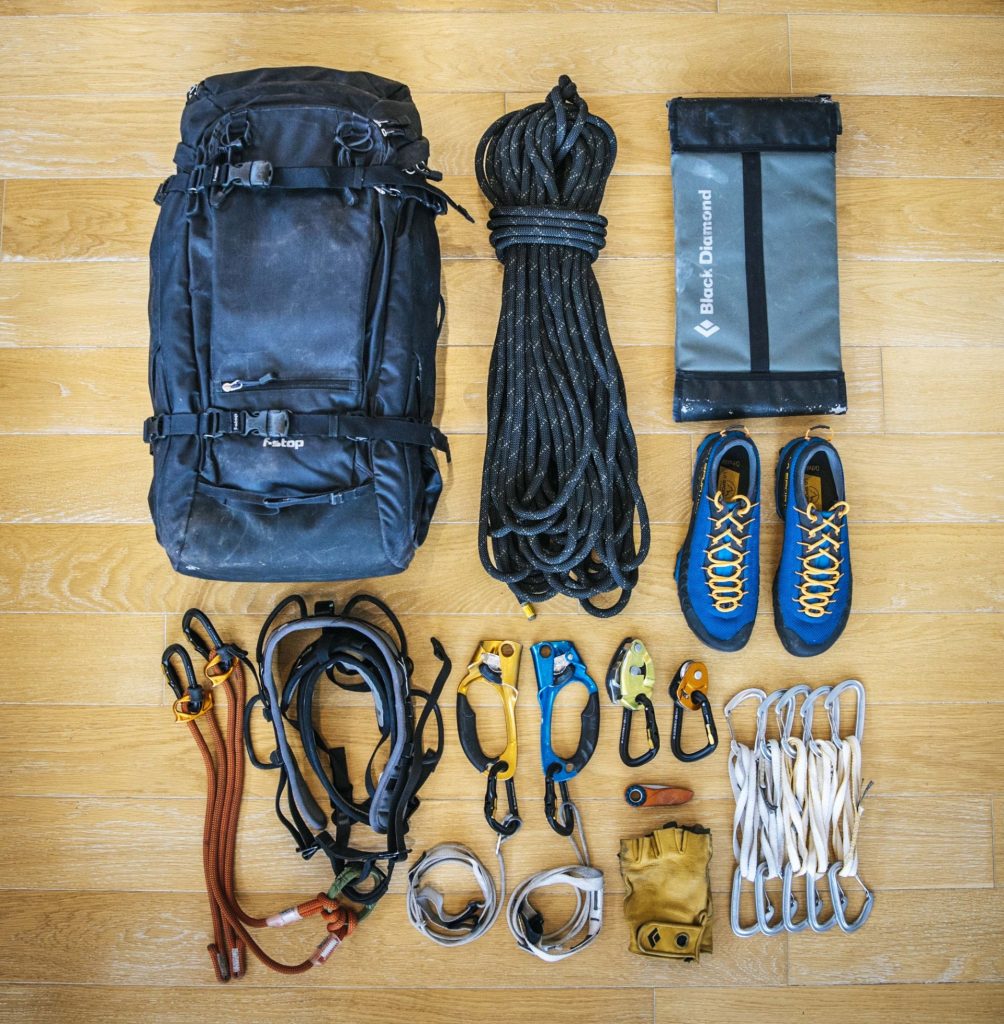
As soon as this COVID thing is all over, I will be continuing to shoot the feature doc I am working on about pro climber Emily Harrington and I will also dive back into commercial work with the clients I do work for and keep climbing as often as I can!
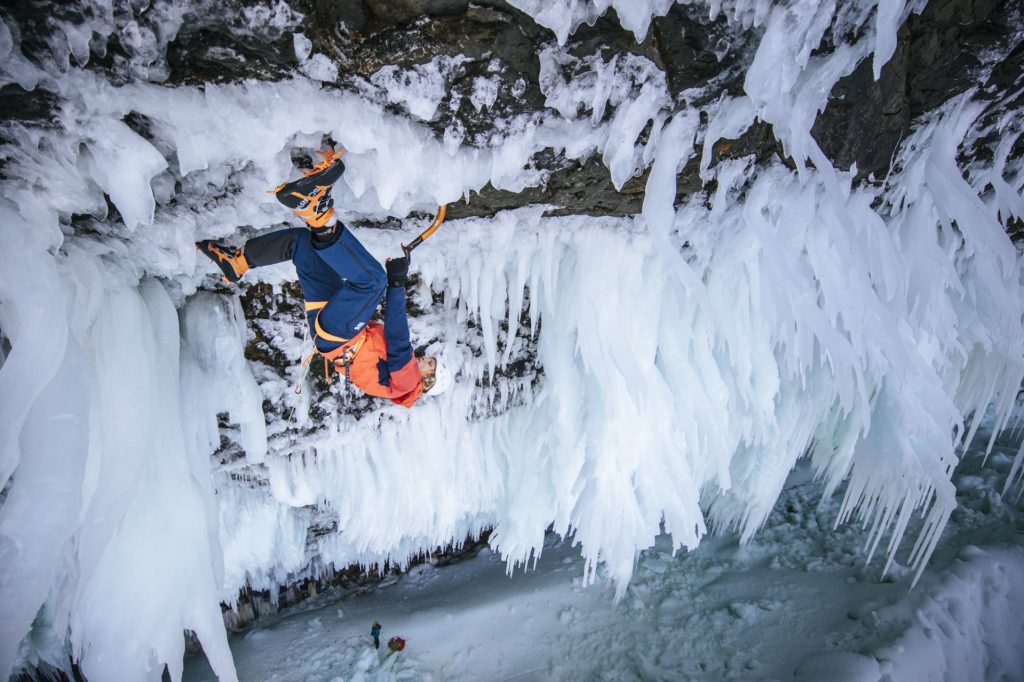
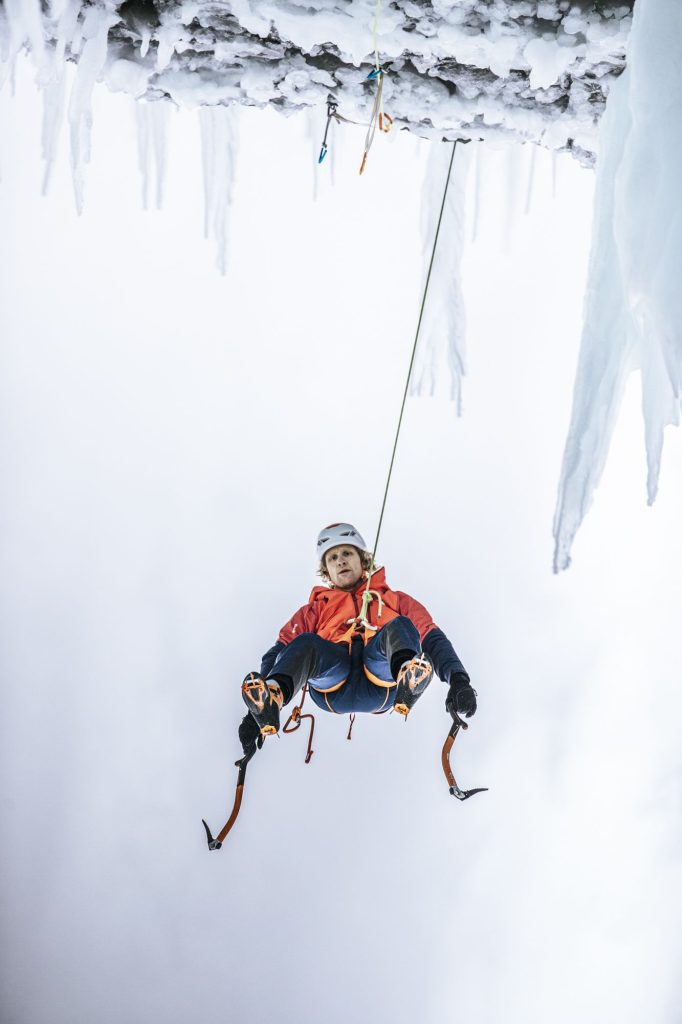
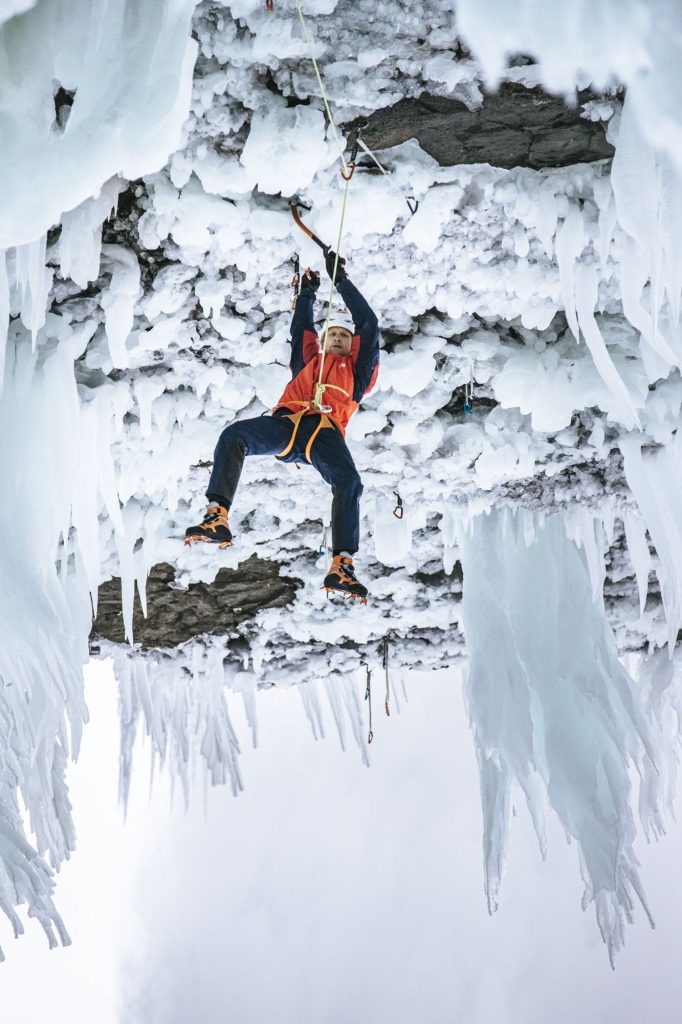
Discount Applied Successfully!
Your savings have been added to the cart.